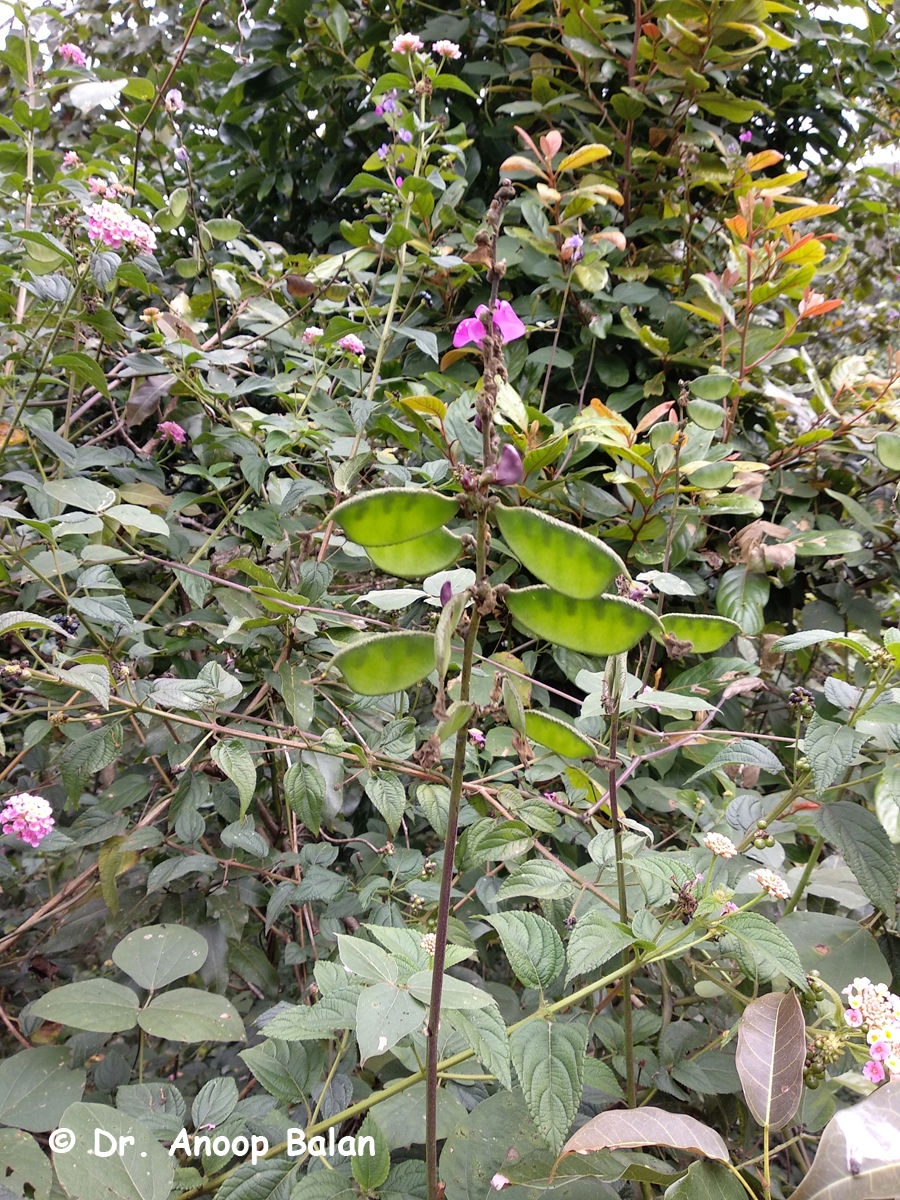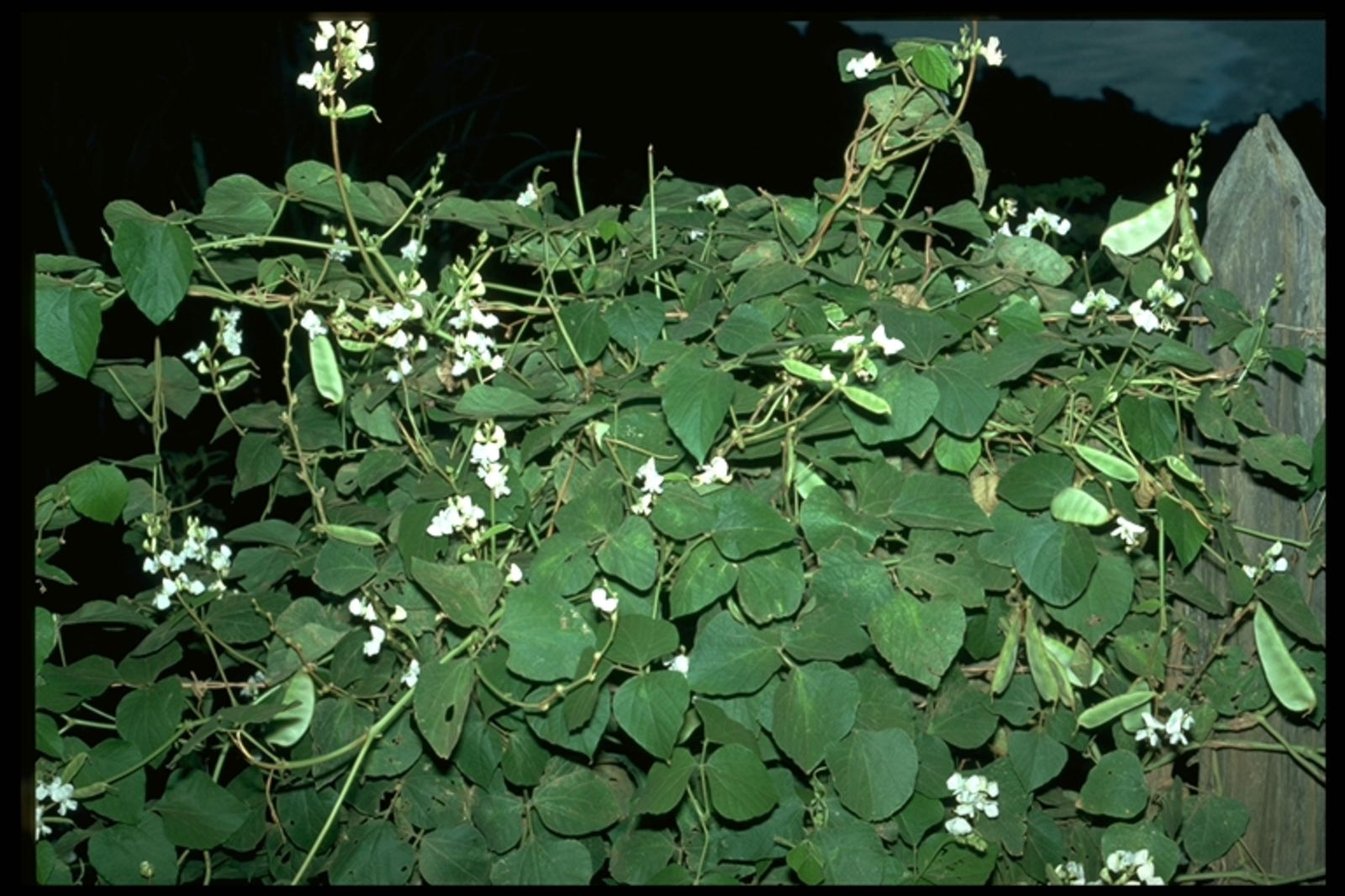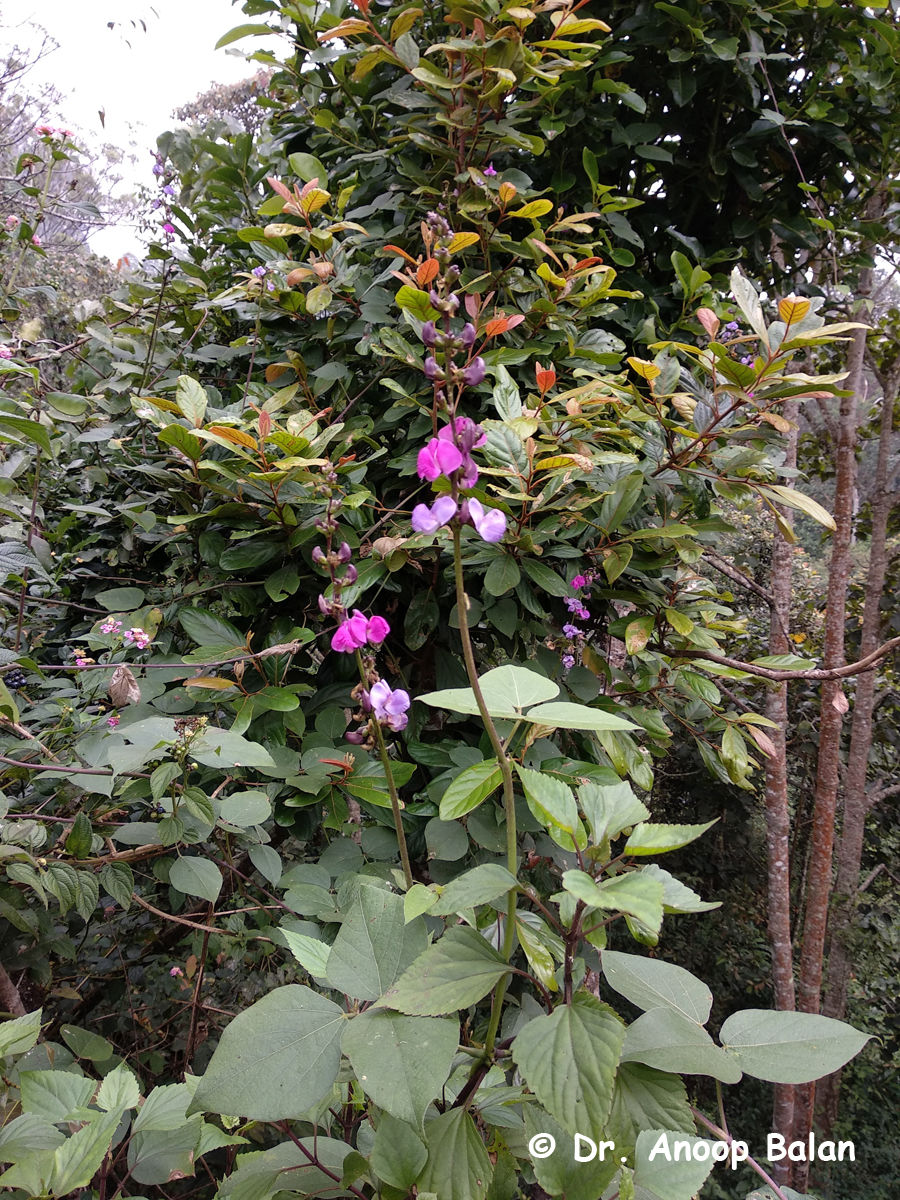Hyacinth Bean
lablab purpureus
Also known as: ["Dolichos lablab","Lablab bean","Indian bean","Bengal bean"]
Overview
A vigorous, twining vine with attractive purple flowers and pods, often grown for ornamental and culinary purposes.
Benefits & Perks
["long-flowering","edible fruits","medicinal use","aesthetic foliage","wildlife attractant (bees, butterflies, birds)","drought tolerant"]
Botanical Classification
| Phylum: | Magnoliophyta |
| Class: | Magnoliopsida |
| Order: | Fabales |
| Family: | Fabaceae |
| Genus: | Lablab |
| Botanical Name: | Lablab purpureus |
Plant Characteristics
Basic Information
- Category: Flowers
- Suitable Location: outdoor garden bed or container in warm, sunny area
- Suitable For:
- Is Weed: No
- Allergenicity: low
Environmental Needs
- Climate: {"temperatureRange":"15–35°C"}
- Hardiness: {"zones":"9–11"}
- Misting: rarely required, only if ambient humidity is very low
- Drainage: Well-draining to fast-draining.
- Soil Type: Rich, loamy soil with good organic matter; well-draining to prevent waterlogging.
Maintenance Level
- Maintenance Level: moderate
- Toughness Level: moderate
- Pruning Frequency: As needed; lightly prune throughout the growing season to manage size and shape.
- Pruning Intensity: Light to moderate; avoid heavy pruning unless necessary to control rampant growth.
Care Details
Ideal Sunlight Coverage:
Full sun (6–8 hours of direct sunlight daily); tolerates partial shade but may produce fewer flowers/beans.
Sunlight Tolerance Tips:
Acclimate plants gradually to intense sunlight if moving from shade; protect from harsh midday sun in hot climates; ensure good air circulation to prevent fungal issues in humid conditions.
Care Requirements
Care Difficulty
easyeasy
Sunlight
full sun to partial shade
Rotate plant for even growth; use shade cloth in extreme heat; avoid placing in drafty areas.
Watering
every 7–10 days during active growth, reduce in winter
Water thoroughly until runoff; allow soil to dry between waterings; avoid overhead watering to prevent fungal issues.
Soil
well-drained, fertile loam with organic matter
pH: Slightly acidic to neutral (6.0–7.0).
Ensure soil is not compacted; avoid waterlogged conditions; enrich with organic matter annually.
Temperature
Warm temperatures (65–85°F or 18–29°C); thrives in tropical to subtropical climates; sensitive to frost.
Protect from frost; provide shade in extreme heat; maintain consistent warmth for optimal growth.
Fertilizing
every 4–6 weeks during growing season with balanced fertilizer
Avoid over-fertilizing to prevent leaf burn; apply fertilizer to moist soil to prevent root shock; use organic compost as a slow-release alternative.
Propagation
Methods
Seeds (direct sowing or indoor starting); stem cuttings (less common but possible).
Step-by-Step Propagation Guide
- Sow seeds 1 inch deep.
- Keep moist.
- For cuttings, take 4–6 inch stem, remove lower leaves, dip in hormone (optional), plant in medium, keep humid.
Best Time: Spring or early summer when temperatures are warm and stable.
Environment
Warm (70–80°F or 21–27°C), humid (60–70%), and bright indirect light; protect from drafts.
Medium
Well-draining seed starting mix or cactus mix with perlite; for cuttings, use a mix of peat and perlite.
Hormone
Not necessary for seeds; rooting hormone can help for stem cuttings.
Timeline
Seeds germinate in 7–14 days; cuttings root in 2–4 weeks and establish in 1–2 months.
Tools Needed
Seed trays, pots, well-draining mix, rooting hormone (optional), misting bottle, grow lights (optional).
Quick Tips
Soak seeds overnight before planting; use bottom heat for faster germination; maintain humidity for cuttings.
Pruning & Repotting
Pruning Guide
Method
Pinch back tips to encourage bushier growth; trim back overgrown vines; remove yellow or damaged leaves.
Pruning Plan
Minimal pruning needed; focus on removing dead or diseased growth and supporting vines for better air circulation.
Tools
Pruning shears, gloves, disinfectant (e.g., rubbing alcohol).
Checklist
Disinfect tools; prune in early morning; remove dead/diseased parts; avoid over-pruning.
Repotting Guide
Best Season
Early spring before active growth begins.
Pot Size
One size larger pot (e.g., +2 inches in diameter); ensure good drainage holes.
Method
Gently remove plant; trim any circling roots; place in a slightly larger pot with fresh, well-draining soil; water thoroughly after repotting.
Suggestions
Not typically needed for outdoor plants; container-grown plants may need repotting every 2–3 years if root-bound.
Checklist
Choose appropriate pot size; use fresh soil mix; handle roots gently; water after repotting; place in appropriate light.
Advanced Care Tips
Watering Mastery
Watering Checklist
Check soil moisture before watering; water deeply at the base; ensure proper drainage; adjust frequency based on season and weather.
How to Apply Water Properly
Water directly at the base of the plant, ensuring moisture reaches the root zone; water early in the morning to minimize evaporation and fungal growth; ensure excess water drains away to prevent waterlogging.
Watering Schedule Tips
Water deeply once the top inch of soil is dry; reduce frequency in winter to prevent root rot.
Soil Improvement
Add compost or well-rotted manure for fertility; mix in perlite or sand for drainage; use mulch to retain moisture and suppress weeds.
Temperature Stress Management
Signs of Temperature Issues
Chlorosis or wilting in extreme heat; stunted growth or bud drop in cold stress; blackened stems in frost damage.
Cold Stress
Low temperatures slow growth and can cause leaf drop; frost can kill the plant or damage developing pods.
Solution: Provide frost protection (e.g., row covers, cloches); move potted plants indoors during cold spells; avoid planting in late fall or early spring in cold regions.
Hot Stress
Excessive heat can cause wilting, flower abortion, and reduced pod set; may lead to leaf scorch in intense sun.
Solution: Provide afternoon shade in extreme heat; increase watering frequency; use mulch to retain soil moisture; ensure good air circulation.
Fertilizing Guide
Fertilizing Checklist
Use balanced fertilizer; dilute to half strength; apply during active growth; avoid contact with stems/leaves.
Fertilizing Method
Use balanced, water-soluble fertilizer (e.g., 10-10-10) every 4–6 weeks during growing season; reduce or stop in winter.
Common Problems & Solutions
Toxicity Warning
Cats
Slightly ToxicCats are susceptible to mild gastrointestinal irritation if they ingest raw or improperly cooked Lablab purpureus, due to the plant's lectins and antinutritional factors.
⚠️ Symptoms:
🌿 Toxic Parts:
⚡ Toxic If:
if eaten raw or improperly cooked
Dogs
Slightly ToxicDogs may experience mild gastrointestinal upset if they consume raw or undercooked Lablab purpureus due to the presence of lectins and other antinutritional compounds.
⚠️ Symptoms:
🌿 Toxic Parts:
⚡ Toxic If:
if eaten raw or improperly cooked
Humans
Slightly ToxicLablab purpureus contains lectins and other antinutritional factors that can cause digestive upset if consumed raw or undercooked. Proper cooking neutralizes these compounds, making the plant safe for consumption.
⚠️ Symptoms:
🌿 Toxic Parts:
⚡ Toxic If:
if eaten raw or improperly cooked
Frequently Asked Questions
Q: Is Hyacinth Bean edible?
A: Yes, the mature seeds and pods are edible when properly cooked, but raw parts contain toxins.
Q: How do I grow Hyacinth Bean?
A: Plant in full sun, well-drained soil, and provide support for climbing.
Q: Does Hyacinth Bean attract wildlife?
A: Yes, it attracts bees, butterflies, and birds due to its nectar-rich flowers.
Quick Reference
| Family: | Fabaceae |
| Care: | easy |
| Light: | full sun to partial shade |
| Water: | every 7–10 days during activ |
Get Expert Care Tips
Download the Plantious app for personalized care reminders and plant identification!
Google Play App Store








